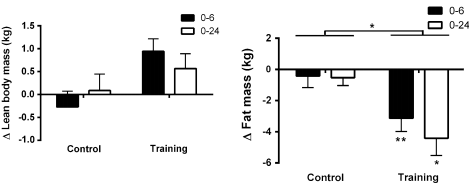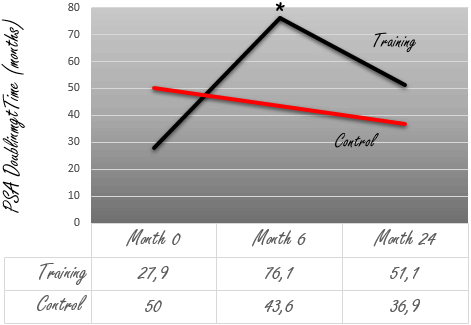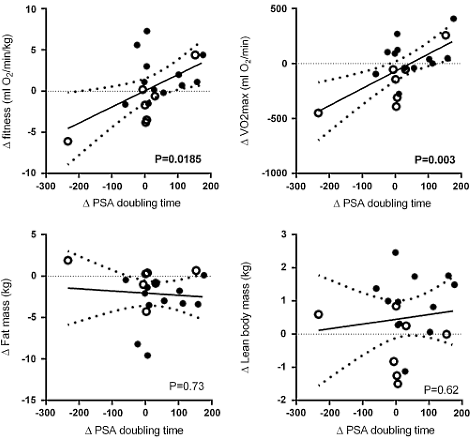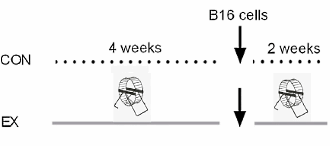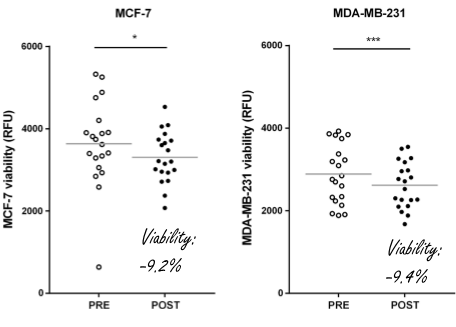|
Definition: "An ergogenic aid is any substance or phenomenon that enhances performance "
|
|
||||||||
23.09.2017 |
|
|
Interval training slows down prostate cancer
Study
"The first week day of training, the training consisted of intervals of 5- to 10-min duration (intensity 55-75% of VO2max), the second day of intervals of 5- to 25-min duration (intensity 55-75% of VO2max), and the third day of intervals of 1- to 5-min duration (intensity 50-100% of VO2max)," the Danes wrote. [More about the training schedule]
The experiment lasted 24 months. The Danes examined the men just before they started the programme, after six months and again after 24 months.
Results
The PSA Doubling Time [the time it took for the PSA level to double] increased dramatically in the men who trained, as the figure above shows. So the speed at which their illness developed slowed down. This did not happen to the men in the control group.
It appeared that the decrease in fat mass and increase in muscle mass made a slight contribution to the increase in PSA Doubling Time, but the effects were negligible. It was principally the increase in endurance capacity [for example the increase in VO2max] that extended the PSA Doubling Time – and delayed the development of the cancer.
Conclusion
The researchers are more explicit in their publication. "The present study demonstrated a promising tendency toward improvement in PSA Doubling Time, adding some support to the idea that increased level of physical activity leading to improved fitness level may be a factor contributing to delay prostate cancer progression", they wrote.
Source:
More:
Archives:
|
|
||||||||||||||||


